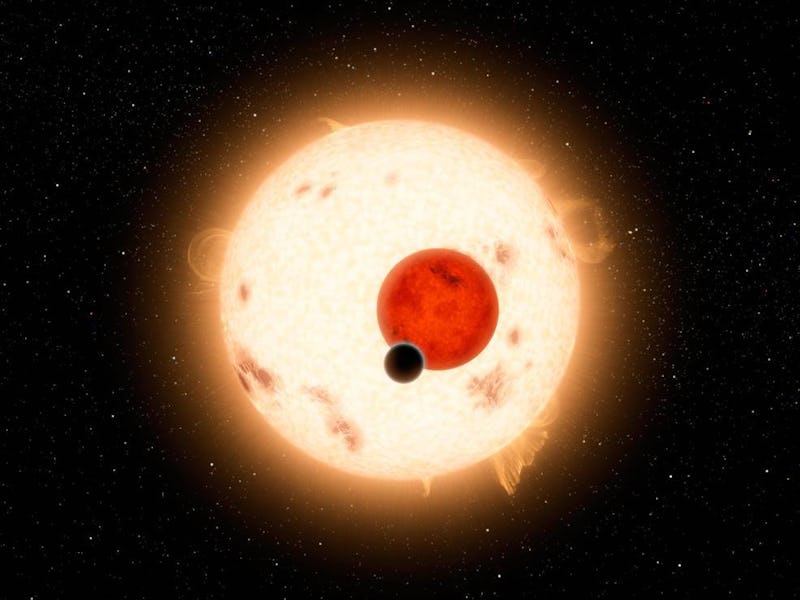Why We Should Look for Alien Life on Exomoons

Could Earth-sized exomoons be capable of sustaining life? Yes, according to scientists mapping the stellar habitable zones for objects outside our solar system. Factors like tidal heating and potential for liquid water indicate moons could be a promising source of study — just as soon as we confirm the existence of one. The new proposal offers an alternative focal point in the search for alien life, which in recent years has overwhelmingly emphasized exoplanets, Mars, and icy moons contained within our solar system.
Though searches are underway, scientists haven’t actually confirmed the discovery of any exomoons — moons orbiting planets beyond our solar system. We’re looking predominately for moons orbiting large gas giants like Jupiter, since those planets are most conducive to hosting moons that are themselves large, roughly on par with Earth or Mars. We’ve already identified 51 potentially habitable exoplanets, but the idea that their moons could sustain life is a newer one. Researchers anticipating an increased focus on exoplanet moons in the near future compared potential tidal heating rates, stellar radiation, planetary illumination, and thermal heat derived from the host planet.
The authors analyzed the habitability potential based on what they termed the “thermostat effect,” the degree to which an exomoon’s tidal heating and internal temperature can decrease if the core comprises molten lava. They found that among stars resembling our sun, an exomoon sufficiently far from the star would be able to prevent the thermostat effect, but only if it’s not already too volcanically active. If it is, it would be a less-than-ideal home for evolving life. A paper detailing the research will be published in the journal Astronomy & Astrophysics.
“[Exomoons] might have lots of liquid surface water, but their surfaces could at the same time be blotched with devastating volcanoes,” co-author Rene Heller explained to Seeker. “Nevertheless, we illustrate that they could be habitable given the right amount of tidal heating, and we show at which distances to their planets these moons would need to be.”
Promising though they may yet be, it’ll be a while before exomoon observation is a busy and well-funded field in its own right. The most cutting-edge telescopes available to us are still trained on potentially habitable exoplanets, not their potentially habitable moons. When we do find them, though, Heller predicts they’ll be remarkable.
“It could be a Mars-like thing around an Earth-like planet, or an Earth around a Neptune, at a distance to their star that could be similar to Mercury’s distance from the Sun (sufficiently close so that we have enough transits to find it),” Heller told Seeker. “It’ll probably be something that will be incredible at first glance, like a planet around a pulsar or a hot Jupiter. I’m really curious to know what this object will be like.”